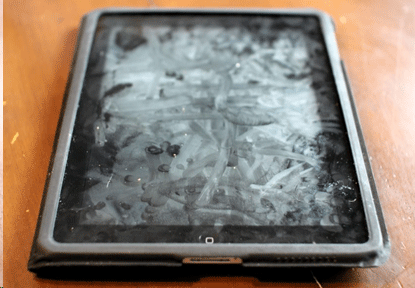|
NOVIDADES
Say goodbye to those pesky fingerprints that blur your iPhone screen and sully your kitchen appliances: NBD Nanotechnologies has introduced a patented coating solution, InvisiPrint, that prevents fingerprint marks from showing up on glass and metal surfaces. The complex formula is able to diffuse the oil from your finger onto the surface with which it’s making contact, allowing the light to pass through without being distorted by the fingerprint. This, to the naked eye, makes it seem like the fingerprint isn’t even there.  Fingerprints that blur your iPhone. WikiMedia Commons
A nanometer, for reference, is the size of a couple atoms or a small molecule. Nanotechnology takes place within the 1-100 nanometer range. We’re also seeing rapid improvement every year. Last year, a group of engineers successfully built a one nanometer long transistor for a computer chip, as opposed to the 15 nanometer transistor you’d find in an Intel computer chip in 2009. This rapid improvement in nanotechnology means significant improvements with the everyday technology that we use. It also means that a technological revolution is rapidly approaching. Nanotechnology is paving the way for unforeseen possibilities to become legitimate realities. Iron nanoparticles that clean poisonous water and tiny robots that travel through the digestive system to record information are concrete inventions that are only a marketing strategy away from being used on a mass scale. As we look ahead into the future of nanotechnology, we need to prepare ourselves for a whole new era of innovation and realize that sweating the small stuff is going to make our lives a whole lot safer and easier. The Innovation Society. Posted: Mar 16, 2017. |
|||||||||||||||||||||||||